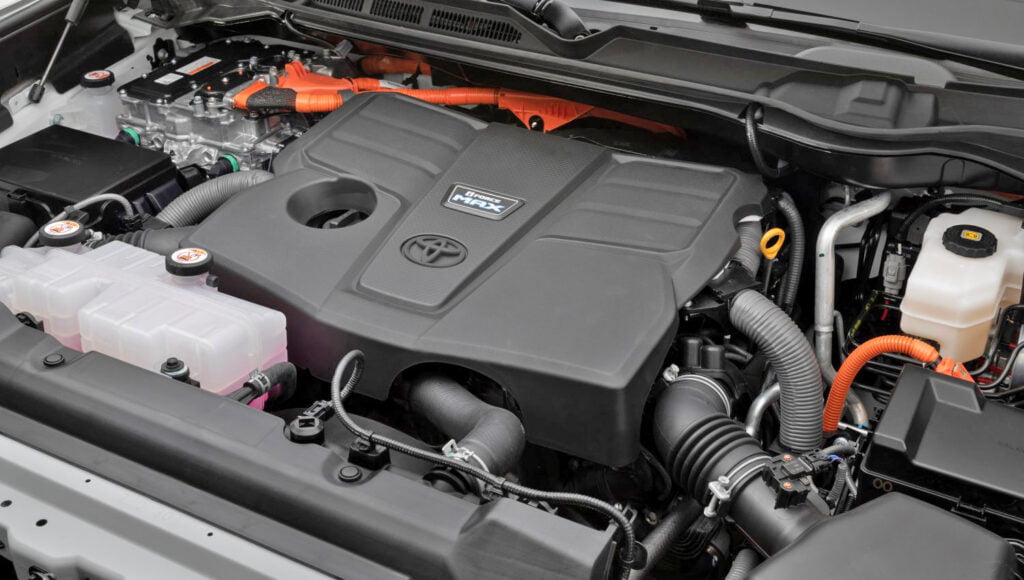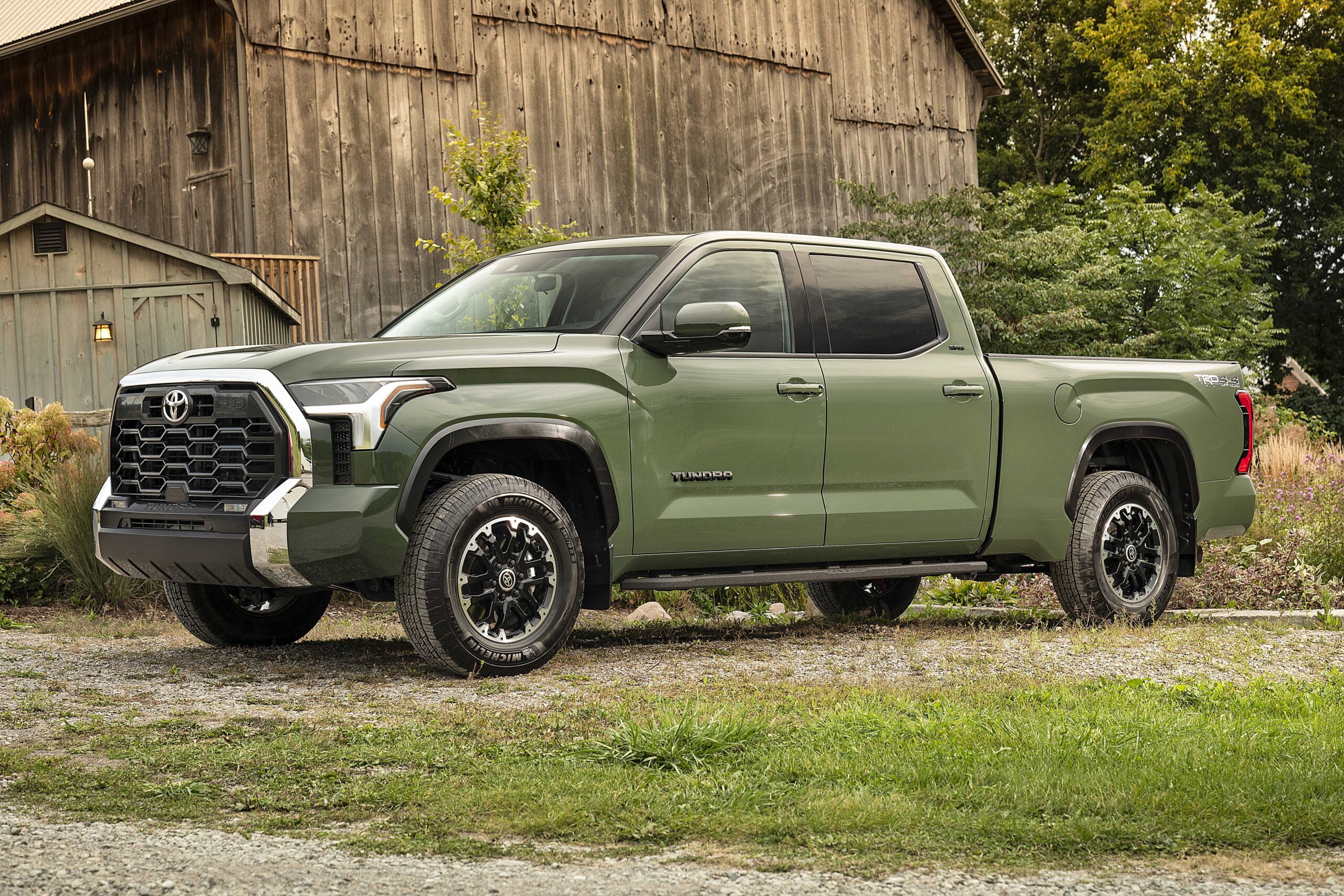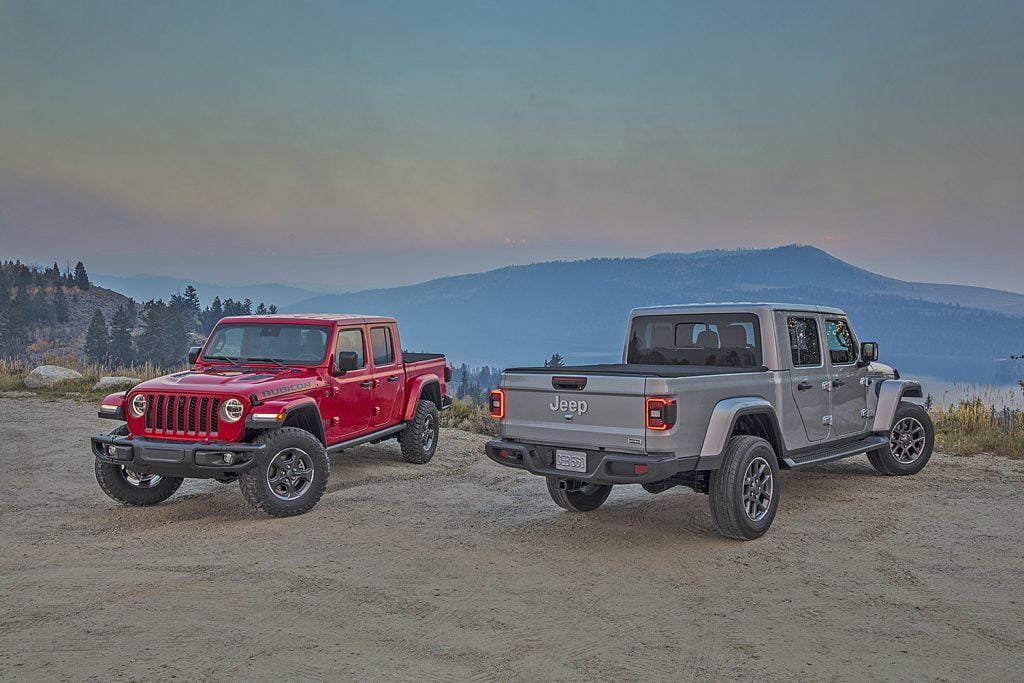On December 3, Toyota dealers will begin taking orders for the all-new 2022 Toyota Tundra. In total, 23 models and trim configurations will be available and Canadian pricing has just been announced. Starting with the base model, the Tundra 4×2 SR, Double-Cab with a 6.5’ bed, lists at a manufacturer’s suggested retail price (MSRP) of $44,990. From here, the price-walk heads up through the various configurations and trims, to the top of the line – which is the Tundra 4×4 1794 Edition, Crew Max Cab with a 6.5’ bed that starts at an MSRP of $74,550.
The single biggest change to this next generation Tundra is the powertrain. For the previous 14 years, a 5.7L V8 was the principle powerplant. A dependable, but very thirsty, engine. It needed a change, so for 2022 it was dropped. Toyota replaced it with two new engines, along with an updated transmission. Let’s take a closer look and explore the benefits of this update.
The new engine is a 3.5L twin-turbo i-FORCE V6. While smaller than the outgoing 5.7L V8, it produces more power – generating 389 peak hp and up to 479 lb-ft of torque. This engine is mated to a new 10-speed, electronically controlled, automatic transmission. Some of its features include:
- Sequential shift mode
- Uphill/downhill shift logic
- Tow/haul driving modes
This all-new powertrain is 25% more fuel-efficient than the outgoing V8 engine, with an impressive fuel consumption of 13.5/10.6/12.2 L/100 km (city/highway/combined).
On the SR grade trucks, the same engine is detuned to produce 348 peak hp and up to 405 lb-ft of torque, with a resulting fuel consumption of:
- 13.1/10.1/11.8 L/100 km (city/highway/combined) for the 4×2 models
- 13.6/10.4/12.2 L/100 km (city/highway/combined) for the 4×4 models
The second powertrain is a hybrid version of the i-FORCE V6 called the i-FORCE MAX. This self-charging hybrid electric, with its integrated electric motor, also has numbers that are impressive:
- 437 hp at 5,200 rpm
- 583 lb-ft of torque at only 2,400 rpm.
This powerplant will be available later in 2022.
The new 3.5L twin-turbo V6 – The i-FORCE
This new design incorporates an aluminum block with a displacement of 3,445 cc via an 85.5 mm bore and 100 mm stroke. The 24-valve, Dual Overhead Cam V6 is chain-driven and features Dual VVT-i systems. When dealing with turbos, heat is always a concern. Toyota has addressed this thanks to the water-cooled intercooler keeping turbo temperatures down. Toyota engineers have developed state-of-the-art cylinder heads for max-boost reliability with a two-layer water jacket structure for max coolant flow and combustion chamber strength. Then they added machined cross-channels for additional combustion chamber cooling. The intake ports use a low-profile, laser-applied powder-metal to allow more coolant flow closer to the spark plug. As for exhaust cooling; the engine uses a computer-optimized exhaust valve shape, integrated exhaust manifold and cylinder head design that uses the same water jacket to lower exhaust gas temperature entering the turbochargers.
Those new cylinder heads (with cross-channels) are said to contribute to cylinder head reliability and operating efficiency.

Photo credit: Toyota
The new 3.5L hybrid twin-turbo V6 – The i-FORCE MAX
This second version of twin-turbo V6 adds a hybrid element to the powertrain. This option adds power – and fuel economy. And, that is the brass ring in today’s world; particularly where trucks that can tow are concerned.
Starting with the same twin-turbo V6 platform, it adds a motor generator with a clutch located within the bell housing, between the engine and 10-speed automatic transmission. The motor generator is built in-line to provide additional power that is transferred via the transmission, while the engine start-up, EV driving, electric assist and energy regeneration are solely done via the parallel hybrid components.
During towing applications, the hybrid system provides additional power and torque. In city driving, it offers a quiet ride with improved efficiency while in low-speed EV mode. On the highway, it has responsive linear power delivery and off-road driving is further enhanced thanks to peak torque being achieved low in the RPM range.
A newly developed Power Control Unit (PCU) is used to achieve excellent battery durability and thermal performance. The system employs a 288V sealed Nickel-metal Hydride (Ni-MH) battery that resides under the rear passenger seats.
Although the electric motor does the bulk of the work at lower speeds, once above 29 km/h, the gasoline engine is constantly in operation in the mid- and high-speed range. When in TOW/HAUL mode, the i-FORCE MAX system is constantly in operation to provide acceleration and torque for towing needs.
From a towing point of view, the outcome of these development efforts gives the new Tundra an impressive maximum towing capacity of up to 12,000 lb (5,440 kg) and a max payload capacity of 1,940 lb (880 kg).
Like the prior generation of Toyota Tundra, the new Tundra will be assembled at Toyota Motor Manufacturing Texas (TMMTX) in San Antonio. See at dealers across the country now.




